Questões de Vestibular
Foram encontradas 69.760 questões
Resolva questões gratuitamente!
Junte-se a mais de 4 milhões de concurseiros!
Parte da estrutura do Monumento da Independência do Brasil pode ser modelada por um tronco reto de pirâmide de base quadrada, como apresentado na figura a seguir, em que l é o lado da base menor, a altura do tronco é l /2 e ⍺ 45°.
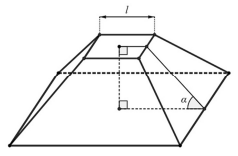
Considerando as informações e a figura apresentadas, julgue o seguinte item.
A razão entre as áreas da base menor pela base maior é
igual a 1/4.
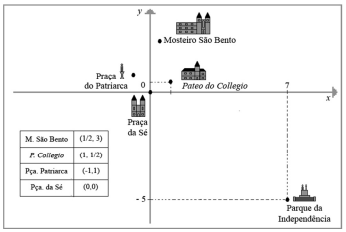
Considerando essas informações, julgue o item seguinte.
A reta que passa no Mosteiro São Bento e no Parque da
Independência é perpendicular à reta que passa na Praça da
Sé e no Pateo do Collegio.

Considerando essas informações, julgue o item seguinte.
O Mosteiro São Bento e a Praça da Sé estão no interior do
círculo cuja fronteira é a circunferência x2 + y2 - 4y = 5.

Considerando essas informações, julgue o item seguinte.
A reta que passa na Praça do Patriarca e no Parque da
Independência cruza o eixo x no ponto de coordenadas (a, b),
com a < 1/4 .

Considerando essas informações, julgue o item seguinte.
A reta que passa na Praça do Patriarca e no Mosteiro
São Bento tem coeficiente angular igual a 4/3.

Considerando essas informações, julgue o item seguinte.
A partir do Pateo do Collegio, percorre-se no máximo
7,5 km até o local onde foi declarada a independência do
Brasil, às margens do rio Ipiranga.

Considerando essas informações, julgue o item seguinte.
A distância do Mosteiro São Bento à Praça da Sé é inferior a
3,2 km.
Declare Independência: como a matemática está mudando
vidas no Brasil?
O projeto Declare Independência é um movimento para discutir um melhor uso da matemática no nosso país. O Brasil é um país desigual e todos sabemos. Entretanto, em algumas áreas do conhecimento, como na matemática, essa desigualdade precisa ser mais reconhecida e enfrentada.
Cidadãos deixam de conquistar melhores empregos e cuidar melhor de suas economias, por não terem domínio de conceitos básicos de matemática, como operações, funções e interpretação de gráficos.
Internet:<//declareindependencia.com.b> (com adaptações)
Considerando o texto como unicamente como motivador e considerando a função f(x) = ax2 + x + b, com a,b ∈ ℝ e a, b > 1, julgue o item.
Assinale a opção cujo gráfico da função f(x) é corretamente ilustrado.
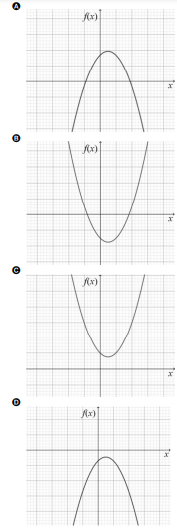
Declare Independência: como a matemática está mudando
vidas no Brasil?
O projeto Declare Independência é um movimento para discutir um melhor uso da matemática no nosso país. O Brasil é um país desigual e todos sabemos. Entretanto, em algumas áreas do conhecimento, como na matemática, essa desigualdade precisa ser mais reconhecida e enfrentada.
Cidadãos deixam de conquistar melhores empregos e cuidar melhor de suas economias, por não terem domínio de conceitos básicos de matemática, como operações, funções e interpretação de gráficos.
Internet:<//declareindependencia.com.b> (com adaptações)
Considerando o texto como unicamente como motivador e considerando a função f(x) = ax2 + x + b, com a,b ∈ ℝ e a, b > 1, julgue o item.
Se g(x) = -x + 2b, a função (g ° f ) (x) = g (f(x)) apresenta duas raízes reais distintas.
Declare Independência: como a matemática está mudando
vidas no Brasil?
O projeto Declare Independência é um movimento para discutir um melhor uso da matemática no nosso país. O Brasil é um país desigual e todos sabemos. Entretanto, em algumas áreas do conhecimento, como na matemática, essa desigualdade precisa ser mais reconhecida e enfrentada.
Cidadãos deixam de conquistar melhores empregos e cuidar melhor de suas economias, por não terem domínio de conceitos básicos de matemática, como operações, funções e interpretação de gráficos.
Internet:<//declareindependencia.com.b> (com adaptações)
Considerando o texto como unicamente como motivador e considerando a função f(x) = ax2 + x + b, com a,b ∈ ℝ e a, b > 1, julgue o item.
Se x e y são raízes de f(x), então xy / x+ y > 1.
Em 2021, comemorou-se o centenário da descoberta e da produção da insulina. No Brasil, a produção de insulina recombinante iniciou-se mediante a colaboração entre a empresa Biobrás e pesquisadores da Universidade de Brasília.
Considerando o texto precedente como motivador, julgue o item subsecutivo.
Considerando-se que mutações no gene da insulina podem causar diabetes neonatal e que a seguir há um heredograma que representa uma família afetada por diabetes bem como a segregação da doença nessa família, é correto afirmar que o mecanismo de herança da diabetes neonatal nessa família é autossômico recessivo.
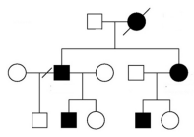
Em 2021, comemorou-se o centenário da descoberta e da produção da insulina. No Brasil, a produção de insulina recombinante iniciou-se mediante a colaboração entre a empresa Biobrás e pesquisadores da Universidade de Brasília.
Considerando o texto precedente como motivador, julgue o item subsecutivo.
A redução e o aumento do açúcar no sangue são regulados,
respectivamente, pelo glucagon e pela insulina.
Em 2021, comemorou-se o centenário da descoberta e da produção da insulina. No Brasil, a produção de insulina recombinante iniciou-se mediante a colaboração entre a empresa Biobrás e pesquisadores da Universidade de Brasília.
Considerando o texto precedente como motivador, julgue o item subsecutivo.
Na produção de insulina com uso da tecnologia de DNA
recombinante, ocorre a inserção do gene que codifica a
insulina em plasmídeos, os quais, posteriormente, são
introduzidos em bactérias.
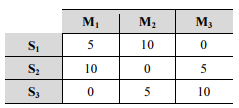
Considerando as informações precedentes, julgue o item que se segue.
O custo x das substâncias em cada medicamento pode ser
obtido por meio da resolução do sistema Ax = c.

Considerando as informações precedentes, julgue o item que se segue.
É válida a relação A x At 52B, com B =

Considerando as informações precedentes, julgue o item que se segue.
A - At = 0, em que 0 representa a matriz nula.

Considerando as informações precedentes, julgue o item que se segue.
Com 1,5 kg de cada substância, é possível produzir, no
mínimo, 100 caixas de cada medicamento.
A partir do texto apresentado, julgue o item a seguir.
Considere que a função f(t) =175/0,01t+1 represente a pressão
arterial sistólica, em mmHg, em função do tempo t, em dias,
de pacientes hipertensos tratados com um fármaco, por um
período de 50 dias, a partir de t = 0. Nessa situação, serão
necessários, no mínimo, 41 dias para que a pressão de um
paciente fique inferior a 125 mmHg.
A partir do texto apresentado, julgue o item a seguir.
Se a queda da produção dos IFAs, no período de 1980 a
2022, segue uma relação linear, então, em 2001, o Brasil
produzia mais de 25% dos IFAs.
A partir do texto apresentado, julgue o item a seguir.
Em geral, os genes que conferem resistência a antibióticos
em bactérias são encontrados em plasmídeos, que são
filamentos de DNA extracromossômicos circulares com
capacidade de duplicação, independentemente do DNA
cromossomal.